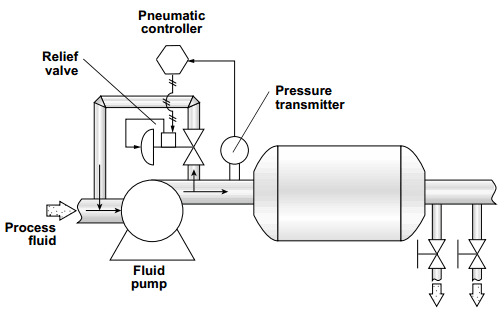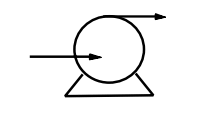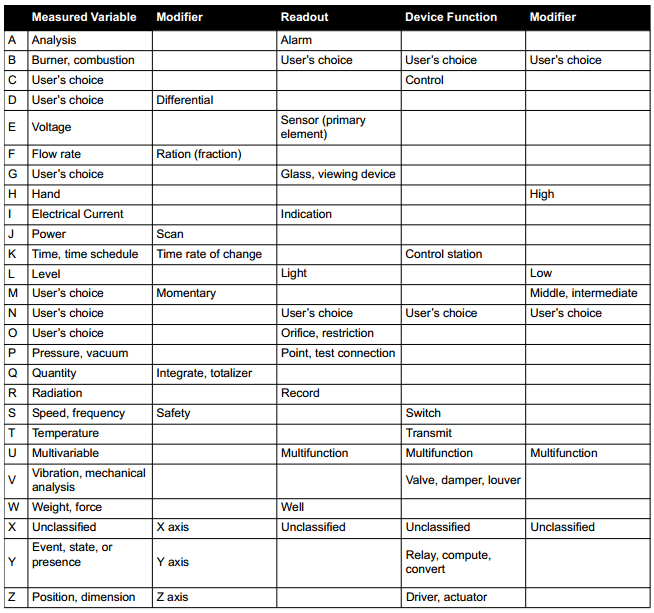Multivariable loops are control loops in which a primary controller controls one process variable by sending signals to a controller of a different loop that impacts the process variable of the primary loop. For example, the primary process variable may be the temperature of the fluid in a tank that is heated by a steam jacket (a pressurized steam chamber surrounding the tank). To control the primary variable (temperature), the primary (master) controller signals the secondary (slave) controller that is controlling steam pressure. The primary controller will manipulate the setpoint of the secondary controller to maintain the setpoint temperature of the primary process variable (Picture 1).
Picture 1: Multivariable Loop
When tuning a control loop, it is important to take into account the presence of multivariable loops. The standard procedure is to tune the secondary loop before tuning the primary loop because adjustments to the secondary loop impact the primary loop. Tuning the primary loop will not impact the secondary loop tuning.
Feedforward Control
Feedforward control is a control system that anticipates load disturbances and controls them before they can impact the process variable. For feedforward control to work, the user must have a mathematical understanding of how the manipulated variables will impact the process variable. Picture 2 shows a feedforward loop in which a flow transmitter opens or closes a hot steam valve based on how much cold fluid passes through the flow sensor.
Picture 2: Feedforward Control
An advantage of feedforward control is that error is prevented, rather than corrected. However, it is difficult to account for all possible load disturbances in a system through feedforward control. Factors such as outside temperature, buildup in pipes, consistency of raw materials, humidity, and moisture content can all become load disturbances and cannot always be effectively accounted for in a feedforward system. In general, feedforward systems should be used in cases where the controlled variable has the potential of being a major load disturbance on the process variable ultimately being controlled. The added complexity and expense of feedforward control may not be equal to the benefits of increased control in the case of a variable that causes only a small load disturbance.
Feedforward Plus Feedback Control
Because of the difficulty of accounting for every possible load disturbance in a feedforward system, feedforward systems are often combined with feedback systems. Controllers with summing functions are used in these combined systems to total the input from both the feedforward loop and the feedback loop, and send a unified signal to the final control element. Picture 3 shows a feedforward-plus-feedback loop in which both a flow transmitter and a temperature transmitter provide information for controlling a hot steam valve.
Picture 3: Feedforward Plus Feedback Control System
This article has discussed specific types of control loops, what components are used in them, and some of the applications (e.g., flow, pressure, temperature) they are applied to. In practice, however, many independent and interconnected loops are combined to control the workings of a typical plant. This section will acquaint you with some of the methods of control currently being used in process industries.
Cascade Control
Cascade control is a control system in which a secondary (slave) control loop is set up to control a variable that is a major source of load disturbance for another primary (master) control loop. The controller of the primary loop determines the setpoint of the summing controller in the secondary loop (Picture 4).
Picture 4: Cascade Control
Batch Control
Batch processes are those processes that are taken from start to finish in batches. For example, mixing the ingredients for a juice drinks is often a batch process. Typically, a limited amount of one flavor (e.g. orange drink or apple drink) is mixed at a time. For these reasons, it is not practical to have a continuous process running. Batch processes often involve getting the correct proportion of ingredients into the batch. Level, flow, pressure, temperature, and often mass measurements are used at various stages of batch processes. A disadvantage of batch control is that the process must be frequently restarted. Start-up presents control problems because, typically, all measurements in the system are below setpoint at start-up. Another disadvantage is that as recipes change, control instruments may need to be re-calibrated.
Ratio Control
Imagine a process in which an acid must be diluted with water in the proportion two parts water to one part acid. If a tank has an acid supply on one side of a mixing vessel and a water supply on the other, a control system could be developed to control the ratio of acid to water, even though the water supply itself may not be controlled. This type of control system is called ratio control (Picture 5). Ratio control is used in many applications and involves a contoller that receives input from a flow measurement device on the unregulated (wild) flow. The controller performs a ratio calculation and signals the appropriate setpoint to another controller that sets the flow of the second fluid so that the proper proportion of the second fluid can be added.
Picture 5: Ratio Control
Ratio control might be used where a continuous process is going on and an additive is being put into the flow (e.g., chlorination of water).
Selective Control
Selective control refers to a control system in which the more important of two variables will be maintained. For example, in a boiler control system, if fuel flow outpaces air flow, then uncombusted fuel can build up in the boiler and cause an explosion. Selective control is used to allow for an air-rich mixture, but never a fuel-rich mixture. Selective control is most often used when equipment must be protected or safety maintained, even at the cost of not maintaining an optimal process variable setpoint.
Fuzzy Control
Fuzzy control is a form of adaptive control in which the controller uses fuzzy logic to make decisions about adjusting the process. Fuzzy logic is a form of computer logic where whether something is or is not included in a set is based on a grading scale in which multiple factors are accounted for and rated by the computer. The essential idea of fuzzy control is to create a kind of artificial intelligence that will account for numerous variables, formulate a theory of how to make improvements, adjust the process, and learn from the result.
Fuzzy control is a relatively new technology. Because a machine makes process control changes without consulting humans, fuzzy control removes from operators some of the ability, but none of the responsibility, to control a process.















































